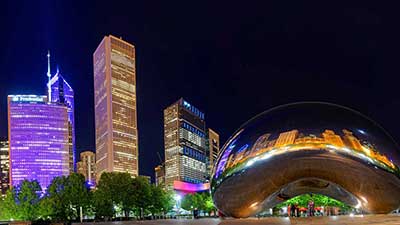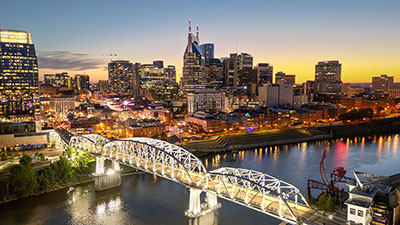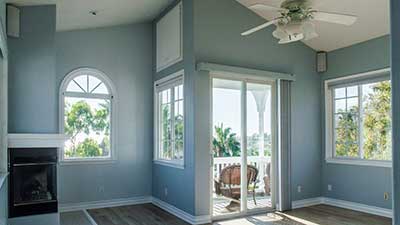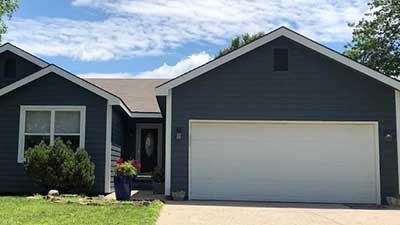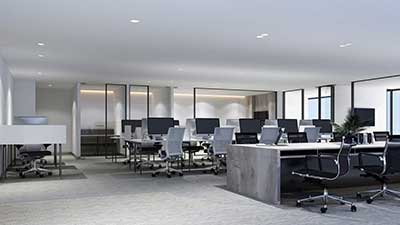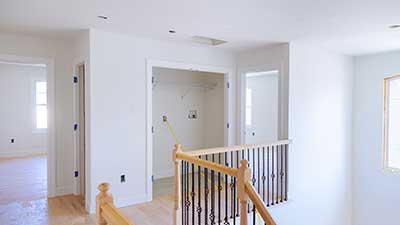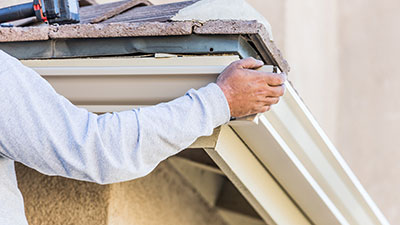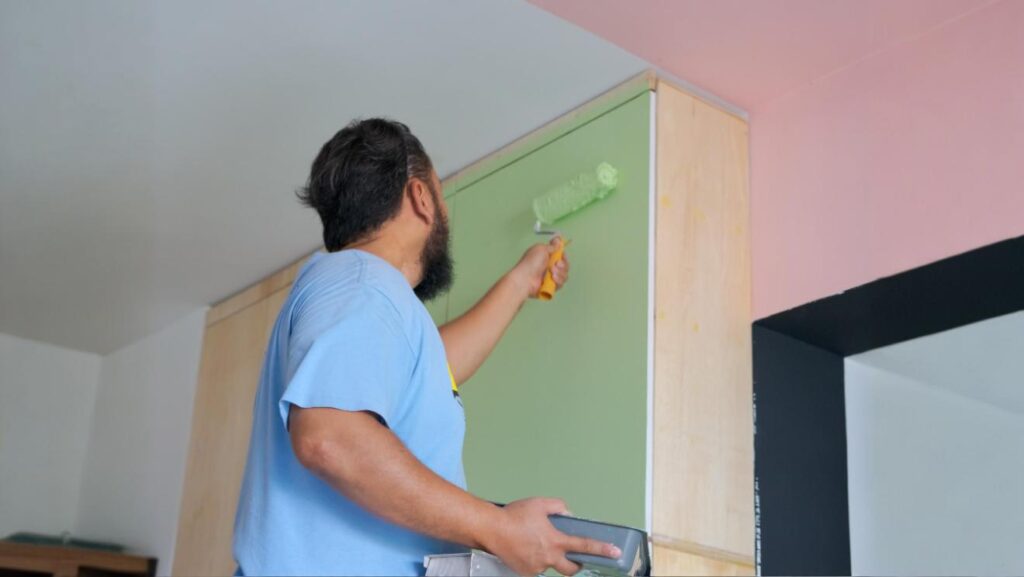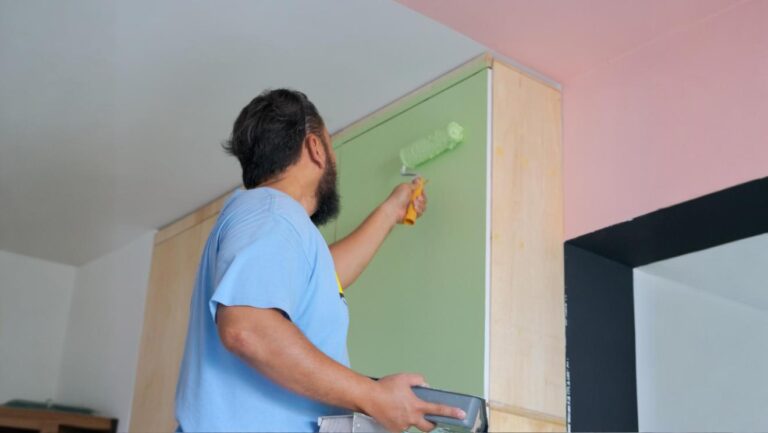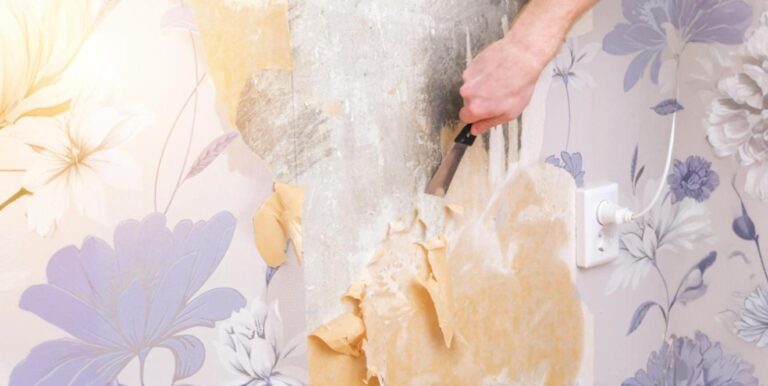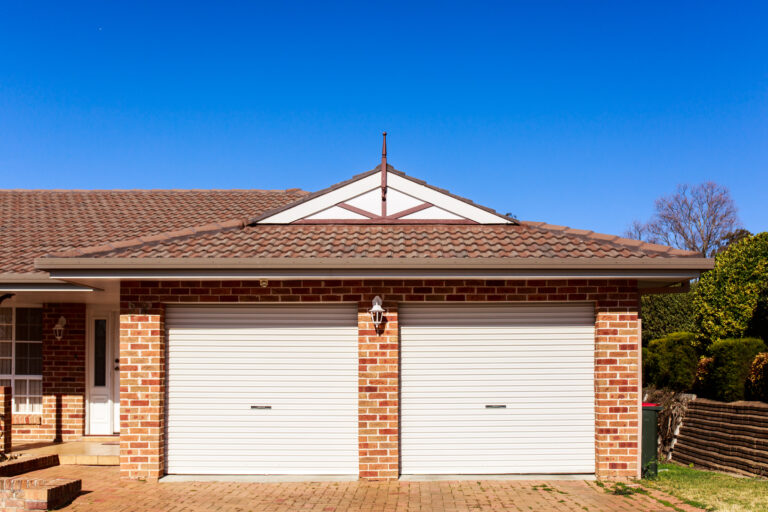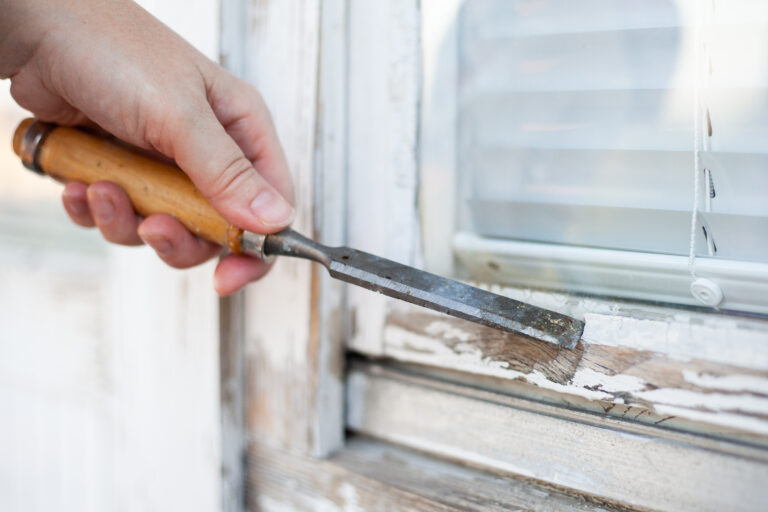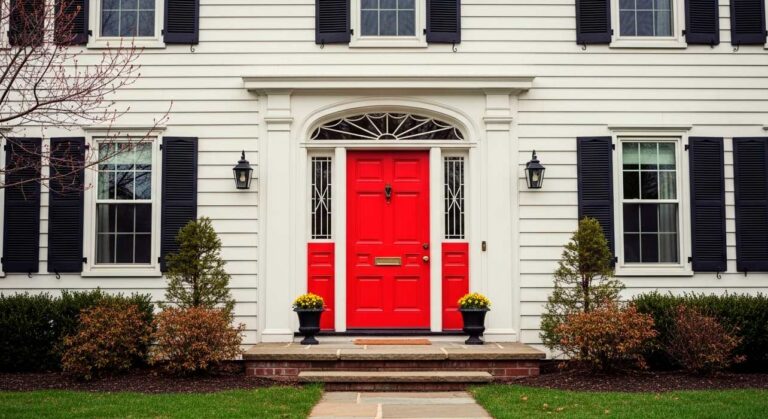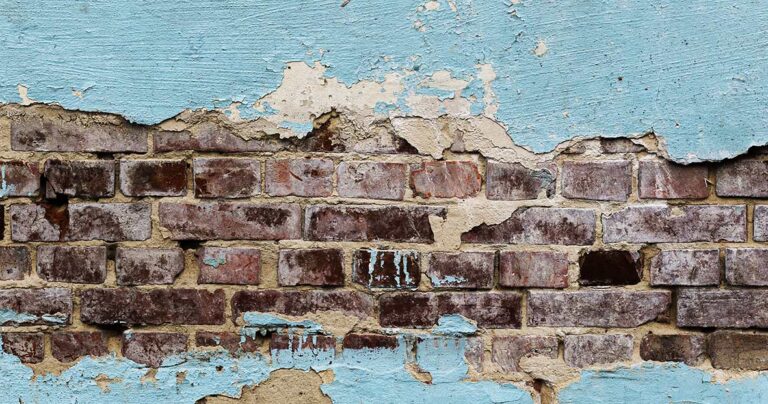Ever tried painting IKEA furniture only to watch the paint stay wet and blotchy while the wood swells and warps? You’re not alone. Many people grab leftover wall paint and treat particle board like regular wood – and that’s where things go wrong.
Particle board creates unique challenges when painting because this engineered wood product absorbs paint like a sponge and swells with moisture. It contains wood chips and sawdust held together with resin, creating a porous surface that drinks up paint rapidly. Without proper preparation, you’ll end up with peeling, uneven coverage, or damaged furniture.
Surface porosity requires specific techniques, moisture sensitivity demands careful material selection, and poor adhesion results from skipped preparation steps. But with the right approach, you can achieve professional-looking results that last.
This guide explains exactly how to paint particle board successfully with proper preparation methods, the right materials, and proven techniques that actually work.
Key Takeaways
- Always gently sand particle board furniture before painting to create proper surface texture for better paint adhesion.
- Use a high quality primer specifically designed for porous surfaces to prevent absorption and ensure even coverage.
- Apply primer in thin, even coats rather than one thick application for best results on particle board surfaces.
- Follow paint manufacturer’s instructions carefully for drying times and application methods to avoid common failures.
- Success when you paint particle board depends entirely on proper surface preparation and quality materials.
- For complex projects where professional results matter, contact OnDemand Painters who understand how to make paint adhere properly to challenging surfaces.
Paint Particle Board: Know Your Surface First
Different particle board surfaces need different approaches. Understanding your material determines success.
Bare Particle Board and Engineered Particle Board
Bare particle board shows the raw wood chip surface and absorbs the most paint and primer. Engineered particle board includes different density levels, with higher density boards accepting paint better. Surface porosity changes between manufacturers, so some boards need multiple primer coats for proper sealing.
Melamine Particle Board
Melamine coating creates a glossy surface that resists paint. This plastic layer covers many furniture pieces and cabinet doors. Light sanding creates texture for primer adhesion, but avoid heavy sanding that cuts through the melamine. Degreasing becomes essential because manufacturing oils prevent proper paint bonding.
Laminated Particle Board and Veneered Particle Board
Laminated surfaces use thin plastic sheets over particle board and resist moisture better but challenge paint adhesion. Veneered particle board has real wood veneer that sands through easily. Both surfaces need scruffing rather than heavy sanding to create surface texture without damaging the protective layer.
Particle Board Furniture: Gather the Right Tools
Proper tools make preparation easier and improve results significantly.
Basic Hand Tools
Paintbrushes handle detail work around edges – choose synthetic bristles for water-based products and natural bristles for oil-based paints. Paint rollers cover large surfaces quickly with the right nap length for your surface texture. Foam rollers create the smoothest finish and eliminate brush marks.
Putty knives spread wood filler smoothly with flexible blades for easy application. Sanding blocks ensure even preparation because hand sanding creates uneven spots.
Professional Equipment Options
HVLP paint sprayers deliver professional finishes for multiple furniture pieces. Airless paint sprayers handle thick materials effectively but need more masking. Consider professional equipment for large projects through rental options.
Preparation Supplies
120-grit sandpaper removes imperfections and creates surface texture without deep scratches. 220-grit sandpaper provides final smoothing between coats. Drop cloths protect surrounding areas, with canvas absorbing spills better than plastic. Painter’s tape creates clean edges when removed while paint stays slightly wet. Tack cloth removes all sanding dust that other methods miss.
Particle Board Projects: Proper Preparation Steps
Thorough preparation determines paint success. Rushing causes adhesion problems and finish failures.
Initial Cleaning and Assessment
Surface cleaning removes dirt and manufacturing residues with mild detergent. Dust removal needs vacuum cleaning followed by tack cloth wiping, especially in grooves where particles collect. Degreasing procedures vary by surface type – melamine needs stronger cleaners than bare particle board.
Repair Common Issues
Wood filler repairs dents and holes effectively when you choose products that accept paint after curing. Wood putty application with a putty knife requires overfilling slightly, then sanding flush when dry.
Caulk fills gaps between pieces using paintable caulk that stays flexible. Address swelling before painting by sanding swollen areas flat or replacing damaged sections. Fix chipping along edges by filling with wood filler and sanding smooth.
Light Sanding and Scruffing
120-grit sandpaper handles initial preparation – sand just enough for adhesion without damage. 220-grit provides final smoothing after repairs and removes scratches from coarser papers.
Scruffing works better than aggressive sanding on finished surfaces using light circular motions. Use sanding blocks on flat surfaces for consistency and remove all dust with tack cloth after sanding.
Oil Based Primer: Foundation for Success
Primer choice determines project success. Oil-based products work best on particle board.
Why Oil Based Primer Works
Ever wondered why that furniture project stayed tacky for hours? Oil-based primer prevents the moisture absorption that causes these problems. Swelling prevention ranks as the main benefit because water-based primers can make particle board expand and distort.
Superior adhesion comes from oil formulations that penetrate porous surfaces effectively, bonding both mechanically and chemically. Moisture resistance protects particle board from humidity and extends paint life significantly. Oil-based primers seal surface porosity better than water-based options, preventing uneven topcoat appearance and excessive absorption.
Apply Primer Correctly
Use foam rollers on flat surfaces for consistency and brush application on edges and details. Apply thin, even coats rather than single thick applications because multiple thin coats penetrate better. Follow proper drying time recommendations and allow full cure before applying topcoats.
Best Paint Types for Different Applications
Paint selection depends on use requirements and specific needs.
Oil Based Paints for Durability
Kitchen cabinets benefit from oil-based paint durability for maximum protection from moisture and cleaning chemicals. Particle board cabinets in bathrooms also need oil-based protection for humidity resistance. Long-term durability makes oil-based paints worth the extra effort, though they require mineral spirits for cleanup.
Water-Based Alternatives
Water-based paints work well after proper oil-based priming. The primer prevents moisture problems while allowing easier application. Coverage advantages include faster drying, easier touch-ups, and more color options.
Cleanup benefits make water-based paints popular for DIY projects with soap and water cleaning.
Furniture-Specific Applications
Bookcases and shelves need durable finishes that resist wear based on usage levels. Dressers and desks benefit from smooth, cleanable surfaces with semi-gloss providing good durability.
Flat-pack furniture often uses thin particle board, so avoid thick paint applications that add weight. Match paint selection to furniture use patterns.
One or Two Coats: Professional Application Methods
Application technique affects appearance and durability significantly.
First Coat Strategy
Avoid one thick coat applications that cause runs and uneven coverage. Even application requires consistent technique – maintain wet edges and work in manageable sections.
Prevent brush marks with long, smooth strokes and light pressure. Remove excess paint from tools before application to prevent dripping.
Multiple Coats Approach
Two thin coats provide better coverage and durability than single thick applications. This method allows correction between coats if needed.
Apply second coats within the recoat window specified by manufacturers. Manage drying time by controlling temperature and humidity for stable conditions.
Lightly Sand Between Applications
Light sanding between coats improves adhesion and smoothness using 220-grit paper with gentle pressure. Sand after coats dry completely but before full cure for best results.
Remove all sanding dust with tack cloth before applying subsequent coats because dust particles create rough finishes.
Best Results: Topcoat and Sealer Options
Protective finishes extend paint life and improve appearance.
Protective Finishes
Clear sealant application over paint provides extra protection against moisture, stains, and mechanical damage. Polyurethane topcoat offers maximum durability for high-use surfaces with appropriate sheen levels. Match chemical compatibility between products and apply in thin, even coats.
Maintenance Considerations
Durability expectations vary by product selection and application quality. Plan maintenance schedules based on use patterns because high-traffic surfaces need more attention. Regular cleaning and periodic touch-ups address damage promptly to prevent spreading.
Fixing Issues: Solutions for Better Outcomes
Problems occur even with careful work. Quick recognition and proper correction prevent project failures.
Adhesion Problems
Those blotchy, wet-looking results happen when you skip surface preparation or use the wrong primer. Poor adhesion shows as peeling or flaking paint from inadequate surface preparation. Fix adhesion problems by removing loose paint and improving surface preparation, sanding to bare substrate if necessary.
Peeling prevention requires proper priming and surface preparation. Never skip preparation steps to save time because this always leads to problems later. Test adhesion on sample areas before full application to reveal potential problems early.
Finish Issues
Uneven coverage results from inadequate preparation or poor application technique. Sand and reapply problem areas for best results.
Bubbling indicates moisture or contamination problems – remove bubbled areas and address underlying causes. Chipping repairs require matching paint and proper surface preparation with feathered edges.
When to Call Professionals
Complex projects benefit from professional expertise. Large cabinet kitchens require specialized equipment and experience. Professional painters like OnDemand Painters have tools and knowledge for efficient completion. Consider professional services when time constraints matter or quality expectations require professional skills.
Conclusion
Successful particle board painting requires proper preparation, quality materials, and proven techniques. Understanding surface types prevents common failures through thorough surface preparation, appropriate primer selection, and proper application methods.
For complex projects or when professional results matter most, consider contacting OnDemand Painters. Our expertise delivers consistent, high-quality finishes that stand the test of time.
FAQs
Can you paint particle board furniture without primer?
No, you should never paint particle board furniture without primer. The porous surface requires proper sealing to prevent uneven absorption and poor adhesion.
What type of primer works best when you paint particle board?
Oil-based primers work best when you paint particle board because they prevent swelling and provide superior adhesion compared to water-based options.
How long should I wait between coats on particle board furniture?
Always follow the paint manufacturer’s instructions for drying times, which typically range from 2-4 hours between coats depending on temperature and humidity.
Do I need to sand particle board furniture before painting?
Yes, light sanding creates necessary surface texture for proper paint adhesion. Use 120-grit sandpaper for initial preparation and 220-grit for smoothing.
What’s the biggest mistake people make when they paint particle board?
The biggest mistake is skipping surface preparation or using water-based primer, which causes the particle board to swell and the paint to fail.
Should I follow paint manufacturer’s instructions exactly for particle board projects?
Absolutely – paint manufacturer’s instructions provide critical guidance for application thickness, drying times, and environmental conditions that ensure project success.

